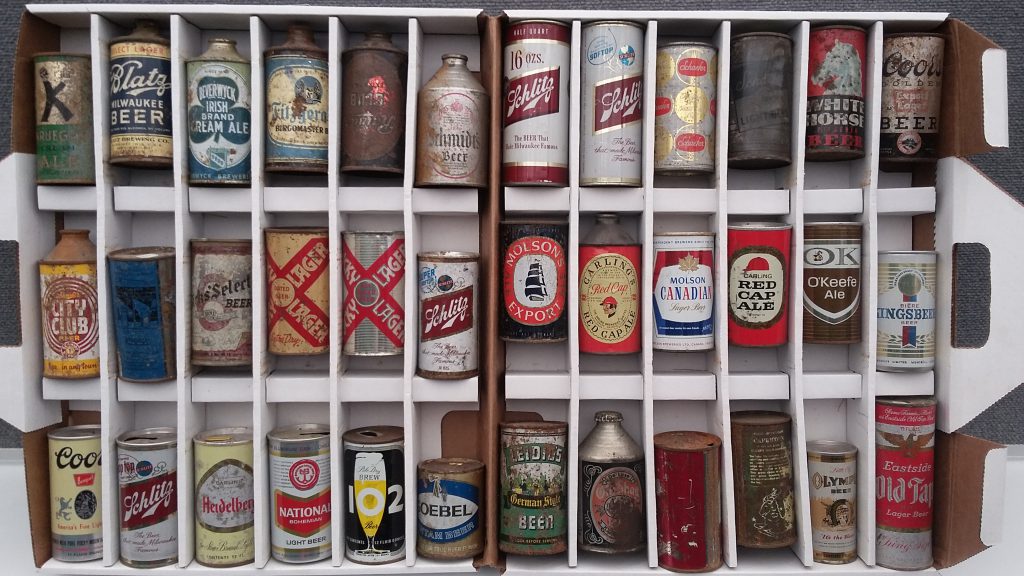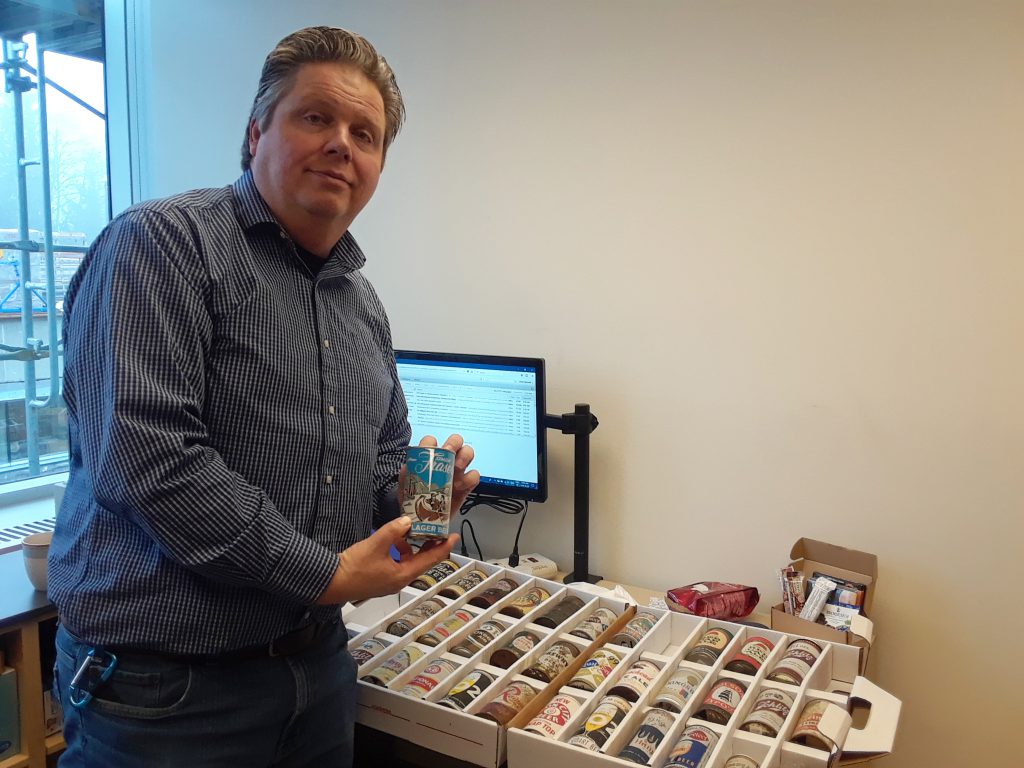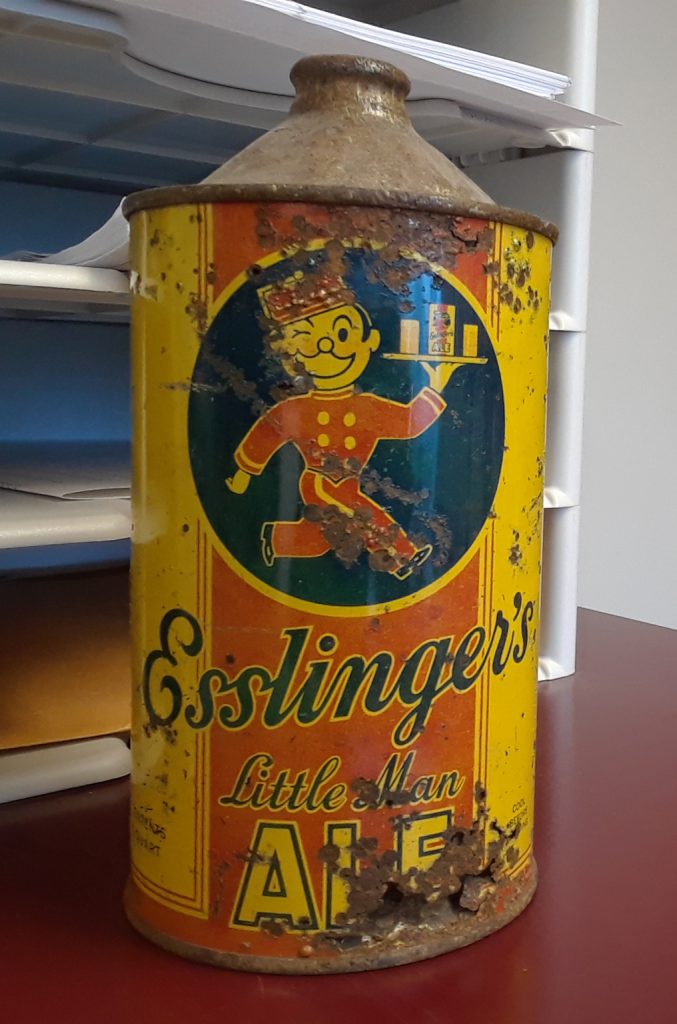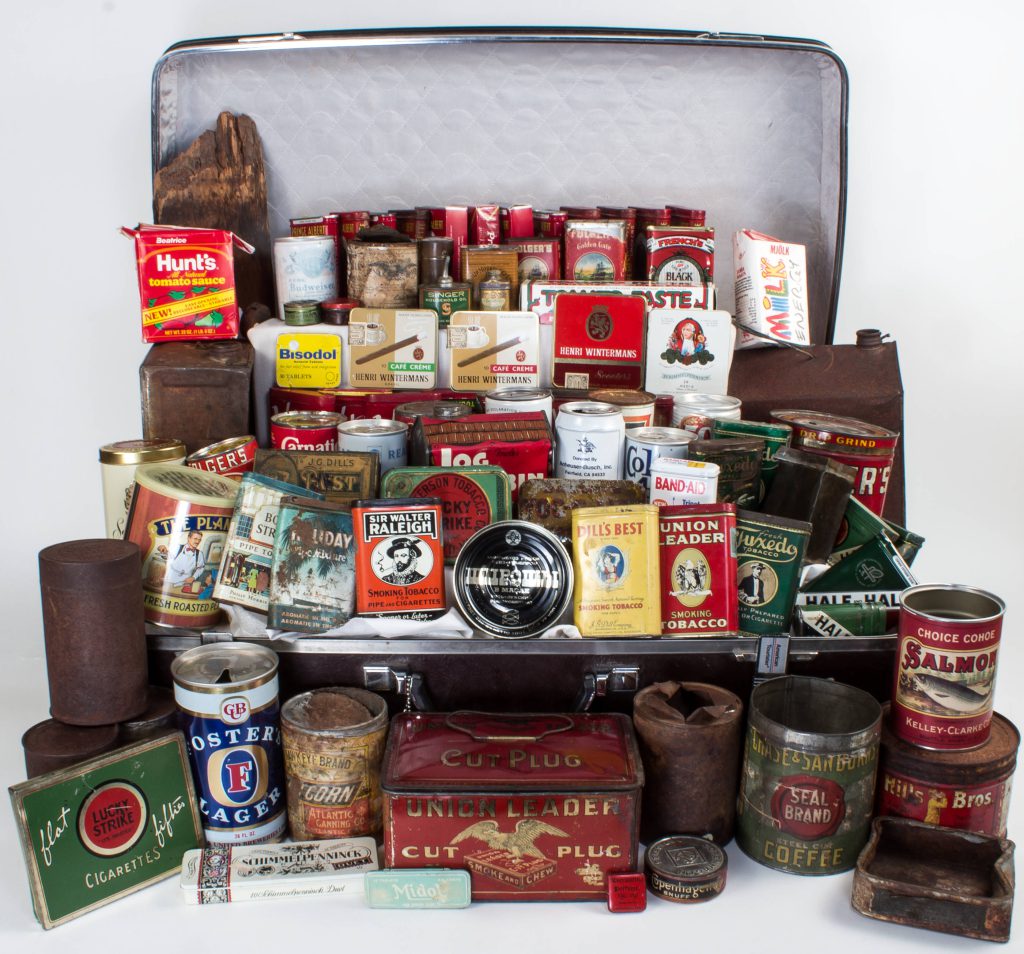Meet Archaeology’s Beer Can Man

David Maxwell doesn’t remember exactly when his fascination with beer began. “As a kid I collected bottle caps: hundreds of them. I think I liked them because they were shiny,” he says, laughing. The drink itself held little appeal for him when he tried it in his youth. “I had my first beer when I was 12 and liked it so much I had my next one when I was 20.”
Yet today, Maxwell may be the foremost living archaeological scholar on beer cans—at least, he’s the only one he knows of, and the only one that I can find. His small office at Simon Fraser University, just outside of Vancouver, British Columbia, is crammed with antique signs for Black Label and Coors, with beer cans and bottles serving as bookends. A Kokanee clock sits on the windowsill, and a couple dozen rusty cans are arranged lovingly in a display case on the table.
Early in his career Maxwell realized that these little pieces of history were more than just fun antiques or collectibles—they were “a perfect time capsule” for archaeologists, helping to put a date on historic sites wherever they are found. Some are literally stamped with a date. Others feature telltale design elements. The beer can has gone through so many evolutionary changes since its first release in 1935 that a connoisseur like Maxwell can pinpoint any can to within a couple of years, or at least a decade, of its creation. “This is the oldest I have,” he says with pride, holding up a Blatz Milwaukee Beer can that dates back to 1935 or ’36.
The work is a quirky sideline for Maxwell, who is officially trained as a Mayanist and spends most of his time lecturing on that pre-Columbian Mesoamerican society. He is also an expert on animal bones; one of his current projects is trying to unravel why the remains of bison herds driven over cliffs by Native Americans reveal far fewer juveniles than living herds.
But when it became clear that Maxwell’s hobby might actually be useful to his profession, his colleagues encouraged him to publish. His resulting 1993 paper in Historical Archaeology (“Beer Cans: A Guide for the Archaeologist”) has since become his most-read work. He has gone on to promote the idea at conferences; I ran into him at the Society for American Archaeology meeting in Vancouver last year, displaying his collection at a poster session.
Maxwell’s work has demonstrated that beer cans can help archaeologists date their modern sites. And, perhaps more importantly, it throws open the door to philosophical questions about what counts as garbage and what as an artifact—what parts of our past we bother to study and keep, and why.
When pursing a new building project, developers often bring archaeologists in to assess the site. They search for, and catalogue, not just arrowheads and bones but also the garbage left behind by more modern settlers.
In British Columbia, where Maxwell lives, anything more recent than 1846 (when the 49th parallel was established as the boundary between American and British territory) isn’t usually considered worthy of preservation by the local heritage act, he says. In the United States, however, the federal benchmark is 100 years, and for some states, including California, it’s 50 years. That makes cans a useful part of an archaeologists’ toolbox, especially to help assess if a site is old enough to deserve closer attention and preservation.
When Maxwell was hired in 1997 to assess a World War II U.S. Air Force base in California, he found beer cans from the 1930s on the site and wrote them up as part of the historic finds. The cans were a surprise: The site was thought to have been unused prior to the U.S. entering the war in 1941, and it’s unlikely that anyone would drink beer that was several years old. His clients decided the cans weren’t worthy of preservation in archival conditions, Maxwell notes with a laugh. “They told me to put them back.” But their existence—a little slice of the site’s history—was recorded for posterity.
Today, Maxwell gets emailed up to a few times a year by colleagues who find beer cans and need help dating them. These opportunities let him put his research to good use—typically either to help prove that a site is modern enough to escape archival requirements or to satisfy someone’s curiosity about when, exactly, the locals were downing brews.
As Maxwell’s paper recounts, beer can history starts back in 1909, when a brewer in Montana first suggested that cans might be a good idea: More durable and lighter than glass, cans are also faster to cool, and don’t let light in to spoil their contents. But at first it proved too hard to pull off. Cans of the time weren’t made to withstand the pressure of a fizzy drink, and chemical reactions would spit out salts that discolored beer and made it undrinkable. Prohibition squelched serious experimentation with beer canning, but by the time it ended in 1933, canners had developed wax and enamel coatings, along with soldering that could withstand internal pressures. On January 24, 1935, Krueger’s Cream Ale and Krueger’s Finest Beer became the first brands of commercial canned beer.
At first, some canners made their beer cans look like bottles, with an elongated neck leading up to a cap. That way, beer manufacturers could use their existing bottle-capping lines and avoid investing tens of thousands of dollars on a new canning line.
When World War II came along, a shortage in tin plate shut down canned beer production for the masses. The U.S. military, however, bought more than a billion cans, all painted a drab olive or gray color to stop them from reflecting sunlight and attracting enemy attention. After the war, canned beer reappeared on the U.S. market, and it became profitable enough to justify new canning lines, so the bottle shape disappeared.
The first flat-top cans needed a punch opener to cut them open. Then, in the 1960s, pop-tops became the rage, with ring pulls or pull tabs that came right off the can. (According to Maxwell, at least one edition of Trivial Pursuit got this part of the history wrong by claiming that Schlitz used the first self-opening beer can in 1963. Maxwell says the Pittsburgh Brewing Company did it with its Iron City label in ’62.) The “stay-with-the-can” opener, like the one still in use today, wasn’t invented until the 1970s.
All this knowledge comes in handy for Maxwell and other archaeologists. When a colleague sent him a can from his site in Reno, Nevada, for example, Maxwell could pinpoint it as an anomalous prewar specimen of Maier Export Beer from Los Angeles. Maxwell sent back the information—and then (after asking politely) added the can to his own collection.
Maxwell’s work follows on that of Jim Rock, an archaeologist with the U.S. Forest Service in Yreka, California, who pioneered the study of cans (of all kinds, not just beer). Rock was one of the reviewers for Maxwell’s 1993 paper. Rock passed away in 2010, after which his collection and categorization of more than 100 cans from the American West was made available online. Cans are “an important and undervalued artifact,” says Chelsea Rose, a research archaeologist with Southern Oregon University and one of the people who put that collection online. (She also stars on the TV show Time Team America.) “We love any artifact that can give us specific information,” she says.
In addition to dates, she notes, cans reveal what people were eating and drinking, along with hints about their financial state, as well as their consumer choices and options. And there’s something oddly endearing about old cans. Displays of what life was like for early settlers just wouldn’t be complete without a rusty tin of beans sitting on a crooked wooden shelf. Rock’s cans are still toured, Rose says, in their original suitcases, wrapped in Rock’s old woolen socks for protection.
Rock used to quip that “tin cans are the Rodney Dangerfield of archaeology,” says Jeff LaLande with a chuckle. LaLande is a retired archaeologist and old colleague of Rock’s. “They just don’t get any respect.”
Maxwell agrees. “It’s hard for us to conceive that things that are modern should be in a museum,” says Maxwell. When people think of artifacts, they think of the pottery and tools of the deep past. But the beer can is a natural extension of that same lineage. “All archaeology is garbage,” Maxwell says. The interesting question is where society draws the line between junk and notable artifacts. He often asks his students, for example, about the nature of someone’s discarded cigarette butt: Is it litter or part of the archaeological record as soon as it hits the ground?
Although much of modern history is already documented in writing and photographs, there is still something special about the tangible history held in a rusty can. Often, such garbage is the only record of the banal, everyday details of life: the things that people don’t bother to record. A famous 1985 Pepsi commercial once played on that fact. It portrayed an archaeology class of the future, identifying with interest a baseball and an electric guitar, but mystified by a glass Coke bottle. The joke, and the marketing message, was that Coca-Cola had died out and only Pepsi remained. The commercial was funny; it won awards. But it also spoke to a deeper truth: Gaps are left in our knowledge when we deem something unworthy of preservation.
Over the decades, Maxwell has collected more than 4,500 cans. Most of them he bought online or from the Brewery Collectibles Club of America’s annual CANvention. “It would be unethical for me to go out with a metal detector and hunt for them,” he notes, since that would be pulling archaeological artifacts out of the ground.
The sheer scale of his collection has forced Maxwell himself to face the question of what deserves to be archived and kept. Recently, he had to ditch about 3,000 of his more common samples for lack of storage space. Though the rusty cans were a part of history, they weren’t worth much to the rest of the world. He took them to the bottle depot, where the staff did a double take at the obviously antique hoard and then gave him 10 cents a can.




































